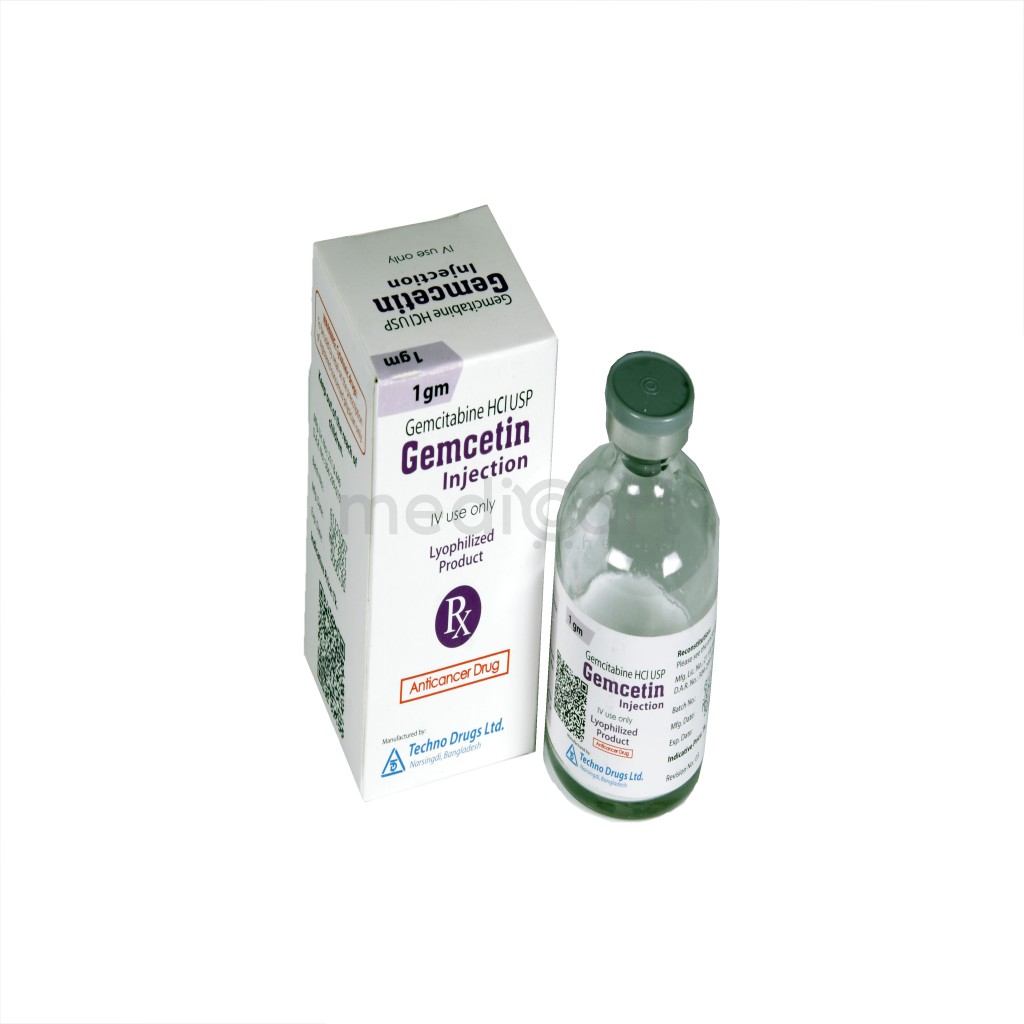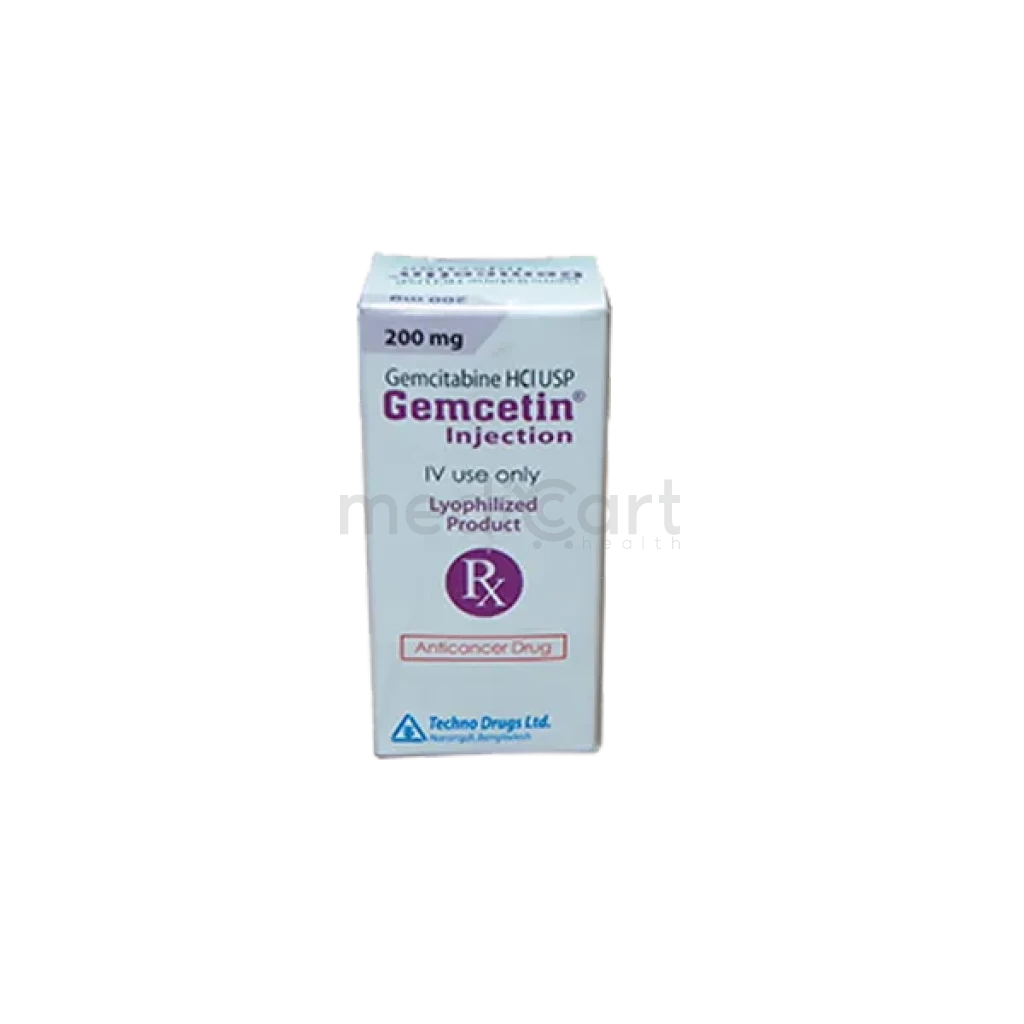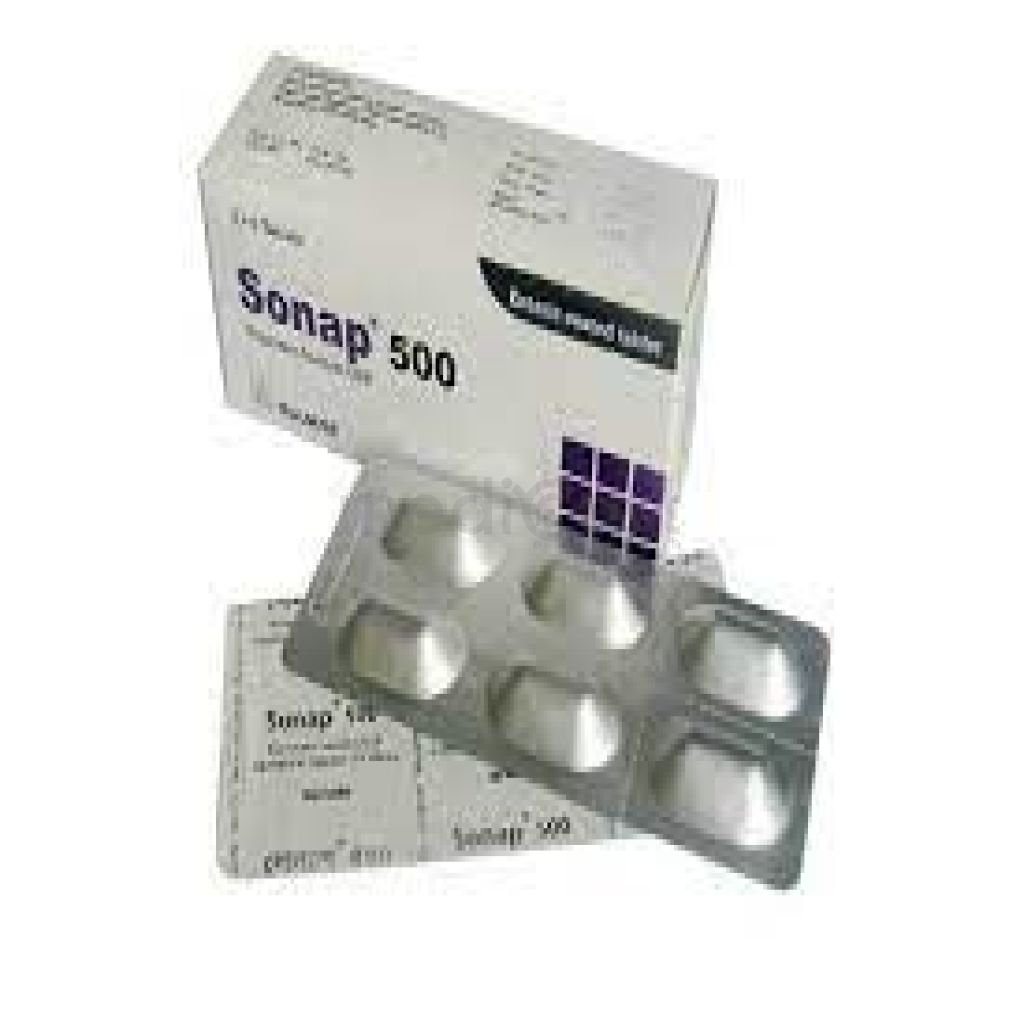

Gemcetin 1 gm Inj-Ins.
Injection* Delivery will be done in Dhaka city only.
More Information About - Gemcetin 1 gm Inj-Ins.
Description
Generic Name
Gemcitabine
Precaution
Children, hepatic and renal impairment. May impair ability to drive or operate machinery. Discontinue on 1st sign of microangiopathic haemolytic anaemia. Prolonged infusion time (>60 minutes) and more frequent than wkly dosing may increase toxicity. Monitor CBC before every dose. Increased risk of haemolytic uraemic syndrome and/or thrombocytcpenic purpura which may lead to irreversible renal failure. Lactation: not known if excreted in breast milk; do not nurse
Indication
Lung cancer, pancreatic cancer, bladder cancer, breast cancer, ovarian carcinoma
Contra Indication
Concurrent radical radiotherapy; pregnancy, lactation; hypersensitivity.
Dose
N/A
Side Effect
>10% N/V (69%),Anemia (65%),Elev LFTs (68%),Neutropenia (63%),Leukopenia (62%),Pain (48%),Proteinuria (45%),Fever (41%),Hematuria (35%),Rash (30%),Thrombocytopenia (24%),Dyspnea (23%),Constipation (23%),Diarrhea (19%),Flu-like syndrome (19%),Hemorrhage (17%),BUN increased (16%),Infection (16%),Alopecia (15%),Edema (13%),Elev bilirubin (13%) 1-10% Paresthesia (2-10%),Creatinine increased (2-8%),Inj site reactions (4%),Bronchospasm (2%) Potentially Fatal: Oesophagitis and pneumonitis when given with radical radiotherapy to the thorax.
Pregnancy Category
Name : Not Classified
Description
FDA has not yet classified the drug into a specified pregnancy category.Mode of Action
Gemcitabine is a synthetic pyrimidine nucleoside and cytarabine analogue which is metabolised intracellularly to active diphosphate and triphosphate nucleosides. It inhibits DNA synthesis by inhibiting DNA polymerase and ribonucleotide reductase. It also induces apoptosis and is primarily active against cells in the S-phase, but may also arrest cells at the G1-S border.
Interaction
May increase the anticoagulant effect of warfarin when used together.
Pregnancy Category Note
Pregnancy Based on animal data and its mechanism of action, therapy can cause fetal harm when administered to a pregnant woman; therapy is expected to result in adverse reproductive effects; drug was teratogenic, embryotoxic, and fetotoxic in mice and rabbits; advise pregnant women of potential risk to a fetus Contraception Advise females of reproductive potential to use effective contraception during treatment and for 6 months after final dose Advise male patients with female partners of reproductive potential to use effective contraception during and for 3 months following final dose Infertility Based on animal studies, Gemcitabine Injection may impair fertility in males of reproductive potential Pregnancy Testing Verify pregnancy status in females of reproductive potential prior to initiating therapy Contraception Therapy can cause fetal harm when administered to a pregnant woman Females Because of potential for genotoxicity, advise females of reproductive potential to use effective contraception during treatment and for 6 months after final dose Males Because of potential for genotoxicity, advise males with female partners of reproductive potential to use effective contraception during treatment and for 3 months after final dose Lactation There are no data on presence of drug in human milk, or effects of gemcitabine on breastfed infant or milk production; because of potential for serious adverse reactions in nursing infants from therapy, advise a lactating woman not to breastfeed during treatment and for one week after the final dose
Adult Dose
Pancreatic Cancer Indicated as first-line treatment for locally advanced (nonresectable Stage II or Stage III) or metastatic (Stage IV) adenocarcinoma of the pancreas 1000 mg/m² IV infusion over 30 minutes once/week x7 weeks; rest 1 week, THEN 1000 mg/m² IV on Days 1, 8, and 15 of each 28-day cycle Various regimens exist including monotherapy and in combination with other chemotherapy agents (eg, erlotinib, paclitaxel protein bound, capecitabine) Non-small Cell Lung Cancer 1000 mg/m² IV infusion over 30 minutes on days 1, 8, and 15 of each 28-day cycle, OR 1250 mg/m² IV infusion over 30 minutes on days 1 and 8 of each 21-day cycle Administer cisplatin 100 mg/m² IV after gemcitabine on day 1 Breast Cancer 1250 mg/m² IV infusion over 30 minutes on Days 1 and 8 of each 21-day cycle With paclitaxel 175 mg/m² on Day 1 as a 3 hr infusion before gemcitabine Ovarian Cancer 1000 mg/m² IV infusion over 30 minutes on Days 1 and 8 of each 21-day cycle With carboplatin AUC 4 on Day 1 after gemcitabine
Child Dose
N/A
Renal Dose
N/A
Administration
IV Preparation Reconstitute 200 mg vial with 5 mL 0.9% NaCl OR 1000 mg vial with 25 mL 0.9% NaCl IV Administration For IV infusion only Concentrated injection (10 mg/mL) must be diluted to 2 mg/mL prior to administration Infuse over 30 min Avoid rapid infusions
Disclaimer
The information provided herein are for informational purposes only and not intended to be a substitute for professional medical advice, diagnosis, or treatment. Please note that this information should not be treated as a replacement for physical medical consultation or advice. Great effort has been placed to provide accurate and comprehensive data. However, Medicart along with its authors and editors make no representations or warranties and specifically disclaim all liability for any medical information provided on the site. The absence of any information and/or warning to any drug shall not be considered and assumed as an implied assurance of the Company.






